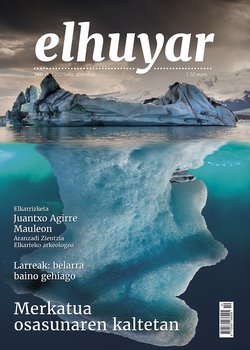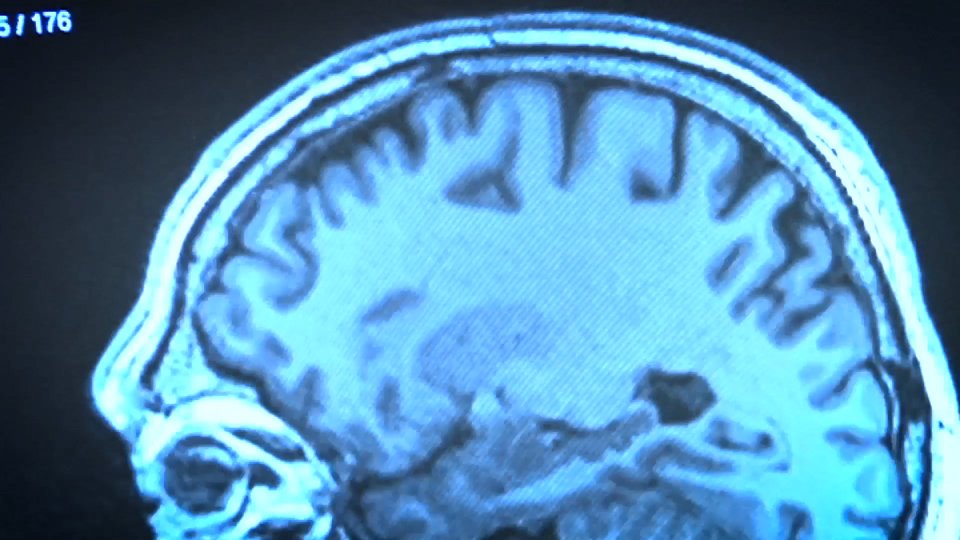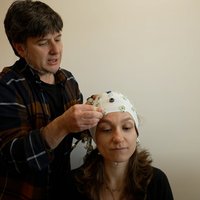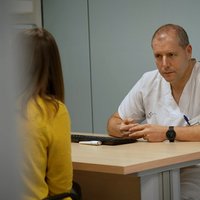High level training
Julio Calleja, professor at the Faculty of Physical Activity and Sports Sciences, and also coach of high-level athletes; and mountaineer who does not need a presentation, Alberto Iñurrategi.

Julio Calleja; UPV/EHUKaixo, I
am Julio Calleja, Professor at the Faculty of Physical Activity and Sports Sciences of the University of the Basque Country and I also train athletes. I studied physical
education because I liked it. I finished my career in Wales and after I came back, I continued to study. After finishing my thesis I worked in several countries: In Australia, the United States and England. The best experience was in Chicago. I was at the hospital where they follow the NBA Chicago Bulls, I worked with doctors and thanks to that collaboration, I continue working with them on many things today. Training
systems have improved a lot in recent years. Athletes train more and more accurately. We have a growing knowledge of the answers given in each sport. Although they are part of a team and are training in the same place, they spend many hours working alone to improve their deficiencies and strengthen their position. In addition, biomedical aids have been essential. With a good team of doctors, nutritionists, physiologists and biomechanics in the area, you will be able to make the most of your performance and achieve the 1% or 2% improvement that is usually required to get medals or win matches.
My experience with teams, teams and top athletes has shown me that the players at the top level are great, they have reached that level thanks to their ability. Really good and excellent players are distinguished by the management of emotions. At any given moment, the player who knows how to make the right decisions at a very high speed will succeed.
Nagore Rementeria; ElhuyarWhat
is a physical trainer for Alberto Iñurrategi?Alberto
Iñurrategi; mountaineer Responsible
for organizing, planning and monitoring the physical preparation work.
I do understand preparation for performance on the one hand, and on the other hand, the better that performance is in the face of risk, the better it is in the form of something that could help to avoid those risks.
Mountaineers in the Himalayas by little!
I don't even know what time it is. The two of you. An hour ago a snowman covered the tent, we went out like rats, and twenty minutes later another fell. Miraculously he hasn't taken us! Under a stone, we have come down here to see if we can get out safe!Let's see
if we make a small repisa, at least to sit down. This rock gives us protection from the fact that from the left to the right the avalanches
are falling. Nagore Rementeria; ElhuyarDo
you have life at
stake?Alberto Iñurrategi; mountaineer
It’s hard to accept that sometimes, but I don’t doubt it. In some situations, what we put at risk is life itself, even if we don’t consider the mountain that way. We propose the mountain as something we like, but we must be aware that at certain times the risk is very high.
Julio Calleja:
Basic research from other countries such as Canada and Australia is applied here to help improve athletes’ performance. In the Faculty these data are used for the purpose of disseminating knowledge. For the public to know this information, they are published in magazines and/or publish doctoral theses related to sports performance.
One of the most developed aspects has been technology. Adibiez, the company that sponsors the preparation of the expedition that Alberto made to the South Pole, gave us some clothes to try before leaving. They adapted to Alberto’s anatomy so that we could see, because we did not know how Alberto would respond to the cold.
It should be noted that when the Himalayas were made in octaves, the temperatures could be 15 or 20 below zero. But we didn’t know how Alberto would respond to the extreme cold, a temperature of 60 degrees below zero. They sent us a very light, sophisticated, state-of-the-art suit. The suit was able to withstand extreme cold and store body temperature.
We did some tests at the Fadura Improvement Center. We checked with the doctors there to see if the suit fit Alberto. In sports where there is extreme activity, when conditions of cold or height can damage the performance of the athlete, in this case Alberto, a high-level Himalayan, this is an example of how technology can help you.
Nagore Rementeria; elhuyarGiven your experience, has physical training evolved over so many years?Alberto Iñurrategi; mountaineer I believe that little by little, there is
a growing awareness of the importance of physical preparation and the possibility of making certain plans also for the mountain, and there are people who are specialized and in sports medicine the mountain has also made its corner and therefore I believe that there is more and more knowledge in this area and they are very important and they are very helpful in looking at the mountains.
Julio Calleja; UPV/EHUIrist
is very difficult. Unless you choose your parents, having extraordinary abilities is difficult and, in addition, you have to have a very favorable environment and, the capacity for training and sacrifice. Not everyone is ready for this, knowing that you can come or not.
I would say that, as in other fields, music, art... is very difficult to reach.
Among the good aspects, if necessary, I would highlight the moments in which titles or medals are obtained, especially in team sports, because it lives differently. From all of this, your relationship with the athletes slows down.
The worst thing is to be aware that sport is lived by a lot of people in an unethical way. A title or a medal or the athlete’s achievement of their goals is what you really like. But there are often situations in the area that are parasitic, not so pleasant. But I understand that we are in a global economic system, that it is a spectacle and that it is part of the sport. You have to live with that.
Buletina
Bidali zure helbide elektronikoa eta jaso asteroko buletina zure sarrera-ontzian











